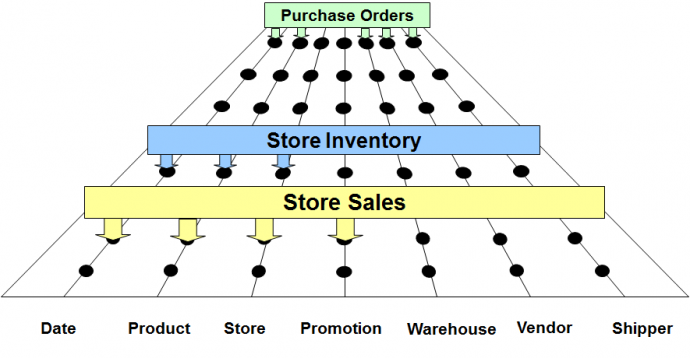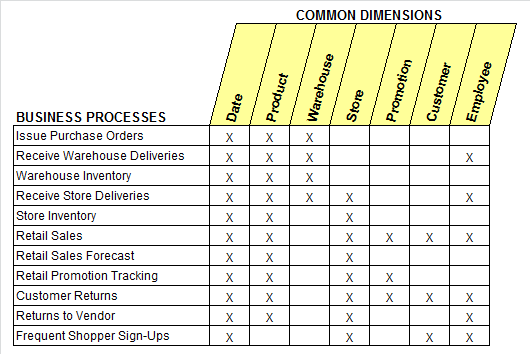The Kimball Group’s Enterprise Data Warehouse Bus Architecture is a key element of our approach. Introduced in the 1990s, the technology- and database-independent bus architecture allows for incremental data warehouse and business intelligence (DW/BI) development. It decomposes the DW/BI planning process into manageable pieces by focusing on the organization’s core business processes, along with the associated conformed dimensions.
Conformed dimensions are common, standardized, master dimensions that are managed once in the extract, transformation, and load (ETL) system and then reused by multiple fact tables. Conformed dimensions deliver consistent descriptive attributes across dimensional models. They support the ability to drill across and integrate data from multiple business processes. Finally, reusing conformed dimensions shortens the time-to-market by eliminating redundant design and development efforts.
The associated Enterprise Data Warehouse Bus Matrix, shown below, is a key design tool representing the organization’s core business processes and associated dimensionality. It’s the architectural blueprint providing the top-down strategic perspective to ensure data in the DW/BI environment can be integrated across the enterprise, while agile bottom-up delivery occurs by focusing on a single business process at a time.
Full coverage of the Kimball Data Warehouse Bus Architecture is available in The Data Warehouse Toolkit, Third Edition, including sample bus matrices for 12 industry case studies.



